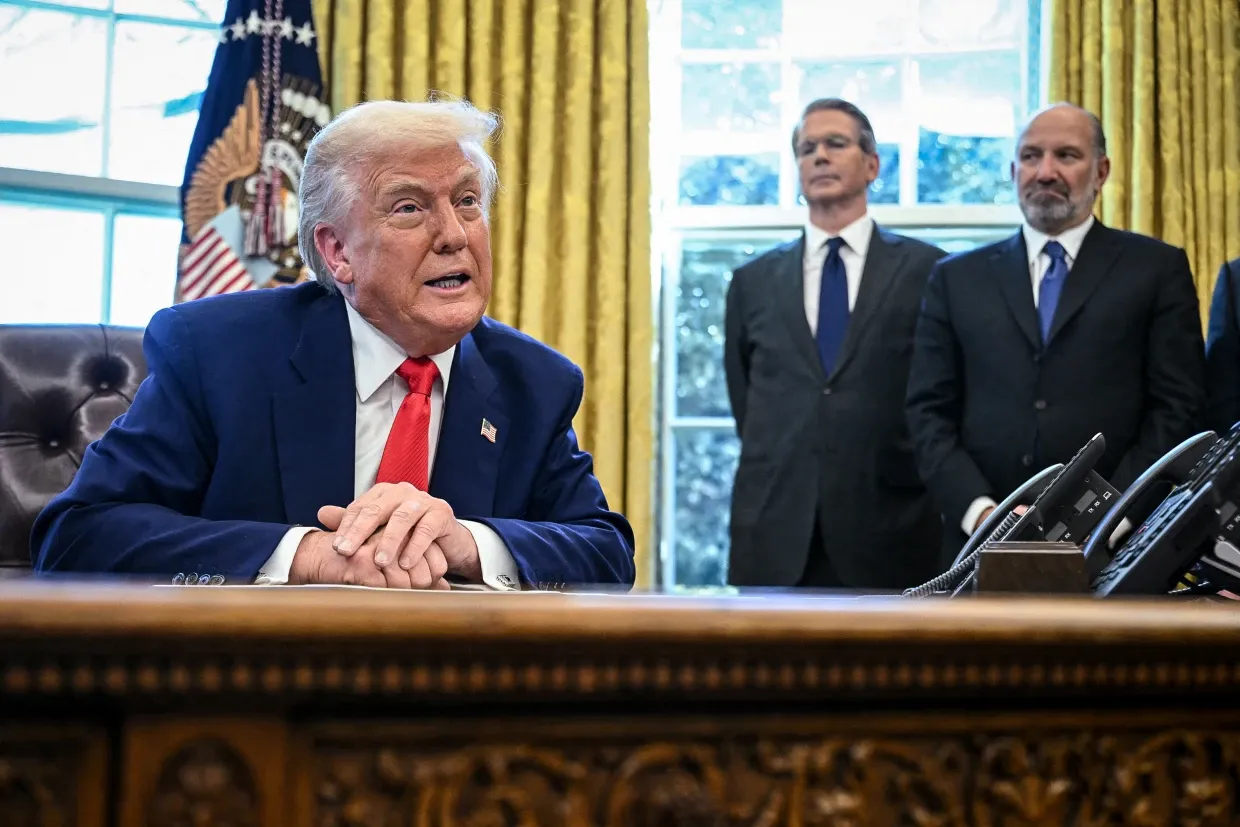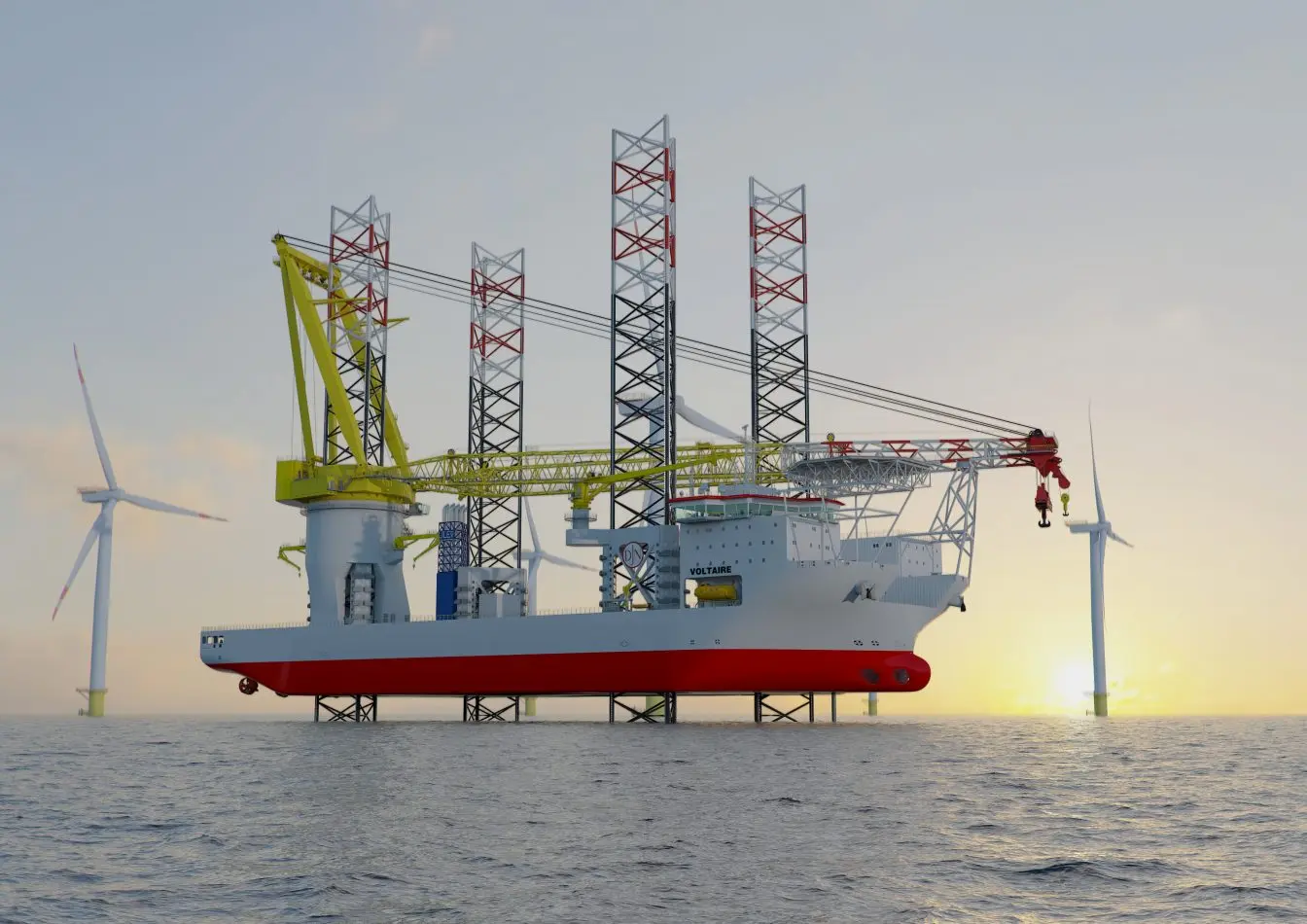The global trade landscape finds itself once again in a state of precarious anticipation, as U.S. President Donald Trump’s latest decision to delay planned tariffs has sent ripples of both hope and bewilderment across major trade partners and businesses worldwide. While nations like Japan, South Korea, and the European Union cling to the possibility of reaching favorable trade deals, smaller exporters, such as South Africa, are left grappling with profound uncertainty and a lack of clear direction. This move, announced on July 9, 2025, pushes back a previously set Wednesday deadline to August 1, a date the President emphatically declared as “final,” stating, “No extensions will be granted.”
This latest maneuver, characterized by form letters sent to 14 countries outlining potential tariff rates ranging from 25% to a steep 40%, serves as what President Trump termed a “final warning” on his “reciprocal” tariffs. According to trade experts and administration officials, the delay is a clear reflection of Trump’s growing frustration with trade negotiations that have proven far more protracted and intricate than his initial expectation of “90 deals in 90 days.” The President, who also announced a 50% tariff on imported copper and hinted at impending levies on semiconductors and pharmaceuticals, has consistently voiced a preference for straightforward tariffs over what he perceives as tedious trade talks often bogged down by national “red lines” and demands for U.S. concessions.
The “America First” Doctrine and the Tariff Playbook
To understand the current situation, it’s crucial to revisit the core tenets of President Trump’s “America First” trade policy. Since assuming office, his administration has consistently advocated for a rebalancing of global trade relationships, asserting that existing agreements and practices have disadvantaged American workers and industries. The primary tool in this rebalancing act has been the strategic application of tariffs – taxes on imported goods – designed to protect domestic industries, reduce trade deficits, and compel trading partners to negotiate more favorable terms for the U.S.
This approach deviates sharply from decades of U.S. trade policy, which largely favored free trade agreements and multilateral negotiations. Trump’s rationale for using tariffs is multifaceted:
- National Security: Tariffs on steel and aluminum, for instance, were initially justified on grounds of national security, arguing that reliance on foreign sources for these critical materials posed a risk.
- Trade Deficit Reduction: A central focus has been reducing the U.S. trade deficit, which the administration views as a sign of unfair trade practices by other nations.
- Forcing Concessions: The most prominent use of tariffs has been as a coercive tool to pressure countries into opening their markets, reducing their own tariffs, and addressing intellectual property theft or other perceived unfair trade practices. This was notably evident in the U.S.-China trade war, which saw extensive tariffs imposed on billions of dollars worth of goods from both sides.
The concept of “reciprocal” tariffs is central to Trump’s philosophy, implying that if a country imposes a certain tariff rate on U.S. goods, the U.S. should impose an equivalent rate on that country’s goods. This tit-for-tat approach, while seemingly straightforward, often overlooks the complexities of global supply chains and the varying economic structures of different nations. The current delay, therefore, is less about a change in strategy and more about intensifying pressure on reluctant partners.
Key Trade Partners React: Hope and Hard Bargaining
The tariff delay has elicited varied responses from major U.S. trade partners, each navigating the complexities of their own domestic politics and economic vulnerabilities.
Japan: Balancing Economic Interests and Political Realities
Japanese Prime Minister Shigeru Ishiba immediately focused on the positive aspect of the delay, stating that his government would “press ahead with negotiations toward a deal that benefits both countries, while protecting Japan’s national interest.” This diplomatic stance reflects Japan’s delicate position. Facing a general U.S. tariff of 25%, Japan is particularly anxious about the separate 25% automotive tariffs, which pose a significant threat to its highly export-dependent auto industry. Major Japanese automakers like Toyota, Honda, and Nissan have substantial manufacturing operations in the U.S. but also rely heavily on exporting vehicles and parts from Japan to the American market. These tariffs could drastically increase costs, reduce competitiveness, and potentially lead to job losses in Japan.
Compounding Japan’s challenge is the upcoming upper house election on July 20. Too many concessions to the U.S., particularly on sensitive issues like agricultural imports, could jeopardize Ishiba’s ruling Liberal Democratic Party’s standing with voters. Japan has historically resisted demands for increased purchases of American rice, a highly protected domestic industry with significant political clout. The pressure from Washington, therefore, places Ishiba in a tight spot, balancing economic imperatives with political survival. As William Reinsch, a former U.S. Commerce Department official and senior trade adviser at the Center for Strategic and International Studies, noted, “These countries are not folding. They’re not giving him what he wants, so he’s added another threat. He’s put a new number to it and extended the deadline.” This suggests Trump is using the election as additional leverage.
South Korea: A New President Navigating Trade Tensions
In South Korea, President Lee Jae Myung, who has been in office for less than a month, also pledged to “intensify talks for a mutually beneficial result.” However, analysts are quick to warn that Lee would not be “a pushover” for Trump, nor would he allow South Korea to be put at a disadvantage relative to Japan. South Korea already has a revised trade agreement with the U.S., the KORUS FTA, which was renegotiated and updated during the Trump administration’s first term. Despite this, the threat of new tariffs indicates that the U.S. administration is pushing for further concessions, possibly targeting specific industries or seeking to address perceived imbalances not fully resolved in the KORUS renegotiation. The new President faces the immediate challenge of establishing his administration’s foreign policy and trade stance under intense pressure from a key ally.
European Union: A United Front Against Tariff Threats
The European Union, a formidable economic bloc, did not receive a specific warning letter or a change to its prescribed 20% tariff rate, which is double the 10% baseline applied to most countries. This suggests that the U.S. administration views its negotiations with the EU as distinct, perhaps due to the scale of their trade relationship and the EU’s unified bargaining power. Sources familiar with the EU talks have indicated to Reuters that a potential deal could involve “carve-outs” for specific high-value sectors. These include:
- Aircraft and parts: Boeing and Airbus, the global aviation giants, are deeply intertwined with supply chains across both the U.S. and Europe. Tariffs could severely disrupt this industry.
- Medical equipment: A critical sector, especially in a post-pandemic world, where uninterrupted supply chains are vital for public health.
- Alcoholic spirits: A significant export for several EU countries (e.g., French wines, Scotch whisky, Irish whiskey), highly valued in the U.S. market.
- Automakers: The EU also seeks to protect its automotive industry, with demands for certain automakers to export to the U.S. at rates below the 25% auto tariff. This would be similar to a framework agreement the U.S. had with the United Kingdom, which included carve-outs for autos, steel, and aircraft engines in the context of post-Brexit trade relations. The EU’s ability to negotiate as a single entity gives it considerable leverage, as retaliatory tariffs from the entire bloc could inflict significant economic pain on U.S. exporters.
Smaller Economies: Caught in the Crosscurrents
While major players like Japan and the EU command significant attention, smaller economies often bear a disproportionate burden of trade uncertainty. Stephen Miran, chairman of the White House’s Council of Economic Advisers, told Fox News that more deals were possible even before the end of the week, provided countries made “concessions deemed worthy by Trump.” This highlights the transactional nature of the administration’s approach.
India, a rapidly growing economy and a significant trade partner, appeared “close to a deal,” suggesting that its ongoing negotiations might be yielding results. However, prospects were “less clear” for smaller countries like South Africa, Thailand, and Malaysia, which face substantial tariffs of 30%, 36%, and 25%, respectively.
South Africa: Pushing Back on Unfair Rates
South African President Cyril Ramaphosa pushed back strongly on Trump’s 30% tariff rate, arguing it was “out of sync” with South Africa’s average tariff rate of 7.6%. This highlights a common grievance among developing nations: “reciprocal” tariffs often fail to account for differing stages of economic development and existing trade agreements. South Africa benefits from the African Growth and Opportunity Act (AGOA), a U.S. trade program that provides duty-free access to the U.S. market for many products from eligible sub-Saharan African countries. New tariffs could undermine the benefits of AGOA and severely impact South African industries that have invested in building export capacity to the U.S. Despite his pushback, Ramaphosa instructed his negotiators to “urgently engage” with Trump’s team on a framework first submitted by the South African side on May 20, demonstrating a pragmatic approach to de-escalate the situation.
The challenge for these smaller nations is that the Trump administration’s negotiating time may be primarily consumed by larger partners like the EU, potentially leaving less bandwidth for detailed discussions with countries that have less economic leverage.
The “Final Squeeze” and Market Dynamics
The current tariff delay is being interpreted by some as a “final squeeze” to extract maximum concessions. After announcing his global “Liberation Day” tariffs of 11%-50% in early April, Trump had quickly dialed them back to 10% for most countries amidst bond market turmoil, effectively buying time for negotiations to lower foreign tariffs and trade barriers. Ryan Majerus, another former U.S. Commerce official and a partner at Washington’s King and Spalding law firm, observed that Trump’s three-month pause had not produced the desired results. Now, the President is “seeking to maximize his negotiating leverage.” Majerus added, “They’re going to pressure-test things and see how far they can go, particularly for countries where there hasn’t been any movement in the talks.”
The timing of this renewed pressure is also significant. Steadier markets and strong economic data in the U.S. provide the Trump administration with some room to maneuver, as the immediate economic fallout from tariffs might be perceived as less severe. However, as Majerus cautioned, “time is short and the more granular you get in negotiating these things, the tougher the sledding gets.” This implies that while broad agreements might be achievable, hammering out specific sector-by-sector carve-outs and detailed tariff schedules is a complex and time-consuming process.
Business Uncertainty: A Paralysis in Decision-Making
Perhaps the most palpable impact of Trump’s rapidly shifting tariff landscape is the profound uncertainty it creates for businesses. The deadline extension offers no genuine relief to companies that are desperately trying to adapt their supply chains and cost structures to avoid tariff-induced price hikes. Executives across various industries report that the constantly changing situation has “paralyzed decision-making.”
Consider the plight of Lapp Holdings, a family-owned German maker of cables, wires, and robotics for factories. Hubertus Breier, the company’s chief technology officer, lamented, “No company can really prepare for this. We are already incurring losses simply because of the uncertainty of the daily changing situation.” Lapp faces a difficult dilemma: absorb the additional costs imposed by tariffs, thereby eroding profit margins, or pass them on to customers, risking a loss of competitiveness and market share. Breier warned that assuming permanently higher prices and costs could even “threaten its long-term existence,” highlighting the existential threat these policies pose to manufacturing businesses reliant on international trade.
Similarly, DeMejico, a family business in Valencia, California, with a plant in Mexico that builds traditional Spanish and Mexican-style furniture, is struggling to adapt to Trump’s 50% tariffs on imported steel. Robert Luna, the company’s president, explained their attempt to mitigate the impact by importing heavy steel latches, hinges, and trim parts separately, then installing them at their Los Angeles-area showroom. This complex workaround is designed to simplify the tariff calculation process, but it adds logistical complexities and costs. Luna noted that the tariffs and higher U.S. wage costs are already inflating prices, and the company faces further cost increases if Trump follows through on threats to hit Mexico with reciprocal tariffs.
Luna’s candid remarks encapsulate the despair felt by many small business owners: “It’s hard to do anything about this as a small business owner, so I just try to be stoic and see what happens. My biggest worry is just keeping the company alive.” His observation that the Trump administration might be “setting up the foundation to train people to pay tariffs” suggests a cynical view that tariffs are becoming a permanent feature of the trade landscape, with businesses ultimately forced to internalize these new costs and pass them on to consumers.
Broader Economic and Geopolitical Implications
The ongoing trade tensions and the reliance on tariffs as a primary negotiating tool have far-reaching economic and geopolitical implications:
- Global Supply Chain Restructuring: Businesses are increasingly looking to diversify their supply chains away from countries targeted by tariffs. This “de-risking” or “re-shoring” can be costly and time-consuming, leading to higher production costs and potentially less efficient global manufacturing networks.
- Investment Deterrence: The uncertainty created by unpredictable trade policies deters foreign direct investment. Companies are hesitant to commit long-term capital to countries where trade rules can change overnight.
- Economic Slowdown: Prolonged trade disputes can dampen global economic growth by reducing international trade volumes, increasing consumer prices, and eroding business confidence.
- Weakening of Multilateral Institutions: The emphasis on bilateral deals and unilateral tariff actions undermines multilateral trade organizations like the World Trade Organization (WTO), which are designed to govern global trade rules and resolve disputes. A weakened WTO could lead to a less predictable and more chaotic international trading system.
- Geopolitical Strain: Trade disputes can spill over into broader geopolitical relations, straining alliances and creating new divisions among nations. The pressure applied to allies like Japan and South Korea, while aimed at economic concessions, can also test the strength of long-standing diplomatic ties.
In conclusion, President Trump’s latest tariff delay, while offering a sliver of hope for some, largely reinforces the prevailing climate of uncertainty in global trade. The administration’s unwavering commitment to using tariffs as leverage continues to bewilder businesses and challenge trade partners, who are forced to navigate a complex web of economic pressures and political sensitivities. As the August 1 deadline looms, the world watches to see whether this “final warning” will indeed yield the desired concessions or further entrench a new, more volatile era of international commerce.
Ready to take your career to the next level? Join our dynamic courses: ACCA, HESI A2, ATI TEAS 7 , HESI EXIT , NCLEX – RN and NCLEX – PN, Financial Literacy!🌟 Dive into a world of opportunities and empower yourself for success. Explore more at Serrari Ed and start your exciting journey today! ✨
Photo source: Google
By: Montel Kamau
Serrari Financial Analyst
9th July, 2025
Article, Financial and News Disclaimer
The Value of a Financial Advisor
While this article offers valuable insights, it is essential to recognize that personal finance can be highly complex and unique to each individual. A financial advisor provides professional expertise and personalized guidance to help you make well-informed decisions tailored to your specific circumstances and goals.
Beyond offering knowledge, a financial advisor serves as a trusted partner to help you stay disciplined, avoid common pitfalls, and remain focused on your long-term objectives. Their perspective and experience can complement your own efforts, enhancing your financial well-being and ensuring a more confident approach to managing your finances.
Disclaimer: This article is for informational purposes only and does not constitute financial advice. Readers are encouraged to consult a licensed financial advisor to obtain guidance specific to their financial situation.
Article and News Disclaimer
The information provided on www.serrarigroup.com is for general informational purposes only. While we strive to keep the information up to date and accurate, we make no representations or warranties of any kind, express or implied, about the completeness, accuracy, reliability, suitability, or availability with respect to the website or the information, products, services, or related graphics contained on the website for any purpose. Any reliance you place on such information is therefore strictly at your own risk.
www.serrarigroup.com is not responsible for any errors or omissions, or for the results obtained from the use of this information. All information on the website is provided on an as-is basis, with no guarantee of completeness, accuracy, timeliness, or of the results obtained from the use of this information, and without warranty of any kind, express or implied, including but not limited to warranties of performance, merchantability, and fitness for a particular purpose.
In no event will www.serrarigroup.com be liable to you or anyone else for any decision made or action taken in reliance on the information provided on the website or for any consequential, special, or similar damages, even if advised of the possibility of such damages.
The articles, news, and information presented on www.serrarigroup.com reflect the opinions of the respective authors and contributors and do not necessarily represent the views of the website or its management. Any views or opinions expressed are solely those of the individual authors and do not represent the website's views or opinions as a whole.
The content on www.serrarigroup.com may include links to external websites, which are provided for convenience and informational purposes only. We have no control over the nature, content, and availability of those sites. The inclusion of any links does not necessarily imply a recommendation or endorsement of the views expressed within them.
Every effort is made to keep the website up and running smoothly. However, www.serrarigroup.com takes no responsibility for, and will not be liable for, the website being temporarily unavailable due to technical issues beyond our control.
Please note that laws, regulations, and information can change rapidly, and we advise you to conduct further research and seek professional advice when necessary.
By using www.serrarigroup.com, you agree to this disclaimer and its terms. If you do not agree with this disclaimer, please do not use the website.
www.serrarigroup.com, reserves the right to update, modify, or remove any part of this disclaimer without prior notice. It is your responsibility to review this disclaimer periodically for changes.
Serrari Group 2025












